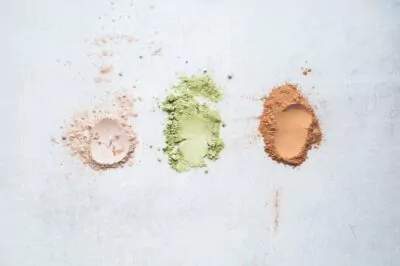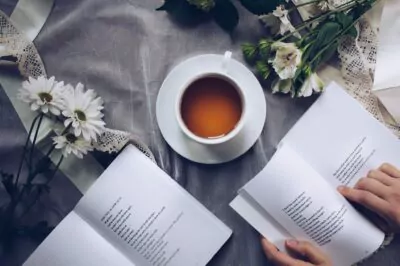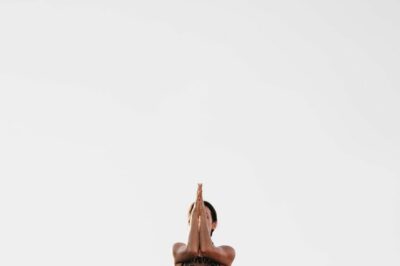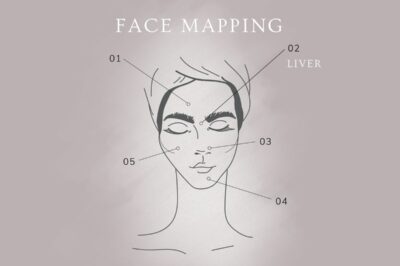Every woman on our beautiful planet, if she’s lucky enough, goes through something of a second puberty. Her sex hormones fluctuate before dropping off, keeping her at a comfortable, even stasis so that she can fulfill the later-life duties of wise-woman and keeper of peace amongst her tribe.
For some women, it’s a graceful transition from mother to crone on the wheel of life but for others it’s roller coaster of menopause symptoms from emotional distress to hot flashes to insomnia and back around again. It can cause a cycle of stress and pain (and heat) that leaves a woman uncomfortable and unable to step into the new role they’re being asked to play on their journey.
What Causes Menopause Symptoms?
Simply put, hormonal imbalance. Our bodies run on them—and not just sex hormones like estrogen and progesterone. Stress hormones like adrenalin and cortisol and happiness hormones like serotonin and dopamine are totally involved with every step of a woman’s journey, including (and especially) their final change of life.
Our bodies have a finite amount of energy and a lot of the chemical precursors to different types of hormones are the same. For instance, the precursor to progesterone (the sex hormone that balances estrogen throughout a woman’s cycle) is the same as the precursor to cortisol—that’s why women with high levels of stress often have irregular periods.
During menopause and perimenopause, the female body is on a course to lower estrogen over time but it can come with a few months (or sometimes years) where a cycle has high estrogen levels too. There are a lot of reasons for this—transitional periods always have their ups and down—but stress and happiness can play a pretty big factor in the smoothness of this shifting and resettling time because her body is trying to find a hormonal balance.
When a woman feels happy and her body is producing serotonin and dopamine she’s more likely to feel relaxed. In a relaxed state, our digestive system and elimination organs are able to heal and process waste better. Since estrogen is changed and broken down by the liver, taking time for relaxation and building happiness is an important part of any woman’s cycle—but it’s especially important during the early stages of menopause.
When our bodies have stress hormones coursing through them, we’re using our energies towards fight or flight, which means that we don’t have all of the energy we need for our elimination systems to be fully functioning. This means that those hormones, especially excess estrogen, that need to be broken down so they can be removed from our bodies stay in circulation. For a woman going through menopause, that can cause all sorts of symptoms.
One common symptom stands out for us because it seems like it shows up in every conversation around menopause, hot flashes. We reached out to a few of our wise-women friends and compiled their tips on how they dealt with the heat.
5 Herbs to Ease PMS (And Other Womanly Cycles)
5 Superfoods that Help Balance Your Hormones (Plus, 2 Recipes)
The Thyroid: The Little Gland with a Big Impact
8 Tips for Hot Flashes
Herbs
Shatavari. This ally is specific for the peri and menopausal woman. It’s a cooling herb that is also an adaptogen so not only will it help cool you down with daily use, it is nourishing and helps the body handle stress over time. The best, and easiest, way to take shatavari is in a powder form. Add it to your smoothie, your tea, your oatmeal, anything—just a tablespoon a day keeps the hot flashes at bay.
Ginseng. This is another adaptogenic herb. It’s used to ease tension, which can cause the hot flashes that many women work with during menopause. Ginseng makes a nice, strong tea or a tincture for the woman on the go.
Vitex. This herb is wonderful for helping control progesterone levels. It helps to balance hormonal levels to keep you more even-keeled over time and reduce hot flashes from the root cause. The best way to take vitex is as a tea a couple of times a day. This is a gentle herb that is really powerful. Often times it’s one of those friends that you don’t really notice the effects of until you’ve stopped taking it.
Eat Cooling Foods
If you’re hot, find a way to cool down. Your mouth is the gateway to your body, so cooling foods can be really helpful here. Salads, smoothies, and iced beverages are great—plus these are part of a whole foods diet that your body can process easily, without having to go into overdrive.
Avoid Warming Foods
It may be obvious if we’re suggesting to eat cooling foods that we would suggest to not eat warming ones, but avoiding a food group is a lot different than adding one to your diet. Don’t put ginger on your salad, and keep the cayenne and jalapenos out of your homemade nachos.
Try to cut back on red wine and steer clear of the classic hot-headed alcohol drinks like whiskey and scotch.
Switch to Bubbles
For some women, champagne doesn’t impact their hot flashes the same way that red wine and harder alcohol does. If you’re going out with friends or having a nice night in, try bubbles. Hey, make it a fun fancy party. Pinkies out!
Exercise
Burn off the heat. Get your blood pumping and your muscles working. Not only will this tire out your body, it will release those happy-making hormones we mentioned earlier so that when your workout is done you can calm down and relax yourself into a night sweats-free sleep.
Another pro-tip: take a cool shower after your workout
Fans are Friends
For a lot of women, hot flashes that happen at night are the worst. And once they start, there’s no telling whether the heat takes you to a sleepless night or a sweaty fever dream. Sleep with a fan on you and control the temperature in the bedroom. Keep it cool and dark so your body knows that’s time for resting and relaxation and that you are not hospitable to night sweats.
If you find that you’re waking up at the same time every night with the hot flashes, check out the Chinese organ wheel and see if it offers you any clues as to where you might want to focus your healing.
Work with Your Wardrobe
You never know when a hot flash will hit you but your friends and coworkers don’t need to know that. Choose outfits that let you wear layers—sleeveless tops with shawls and dusters let you dress for every kind of weather, internal and external. Loose flowing skirts are a best friend here, they let the air circulate around your legs and your midsection so you can stay airy.
Oh and two words: Strappy. Sandals. Keep your feel cool and you’ll stay cool.
The Biggest Tip: Embrace it.
You’re going through an amazing, natural transition. You’re wiser than ever before and you’ve made it through everything that you have come up against, you’ll find a way to beat the heat. Ultimately, it’s your choice to let it rule you or let it inspire you for the next step of your journey.







